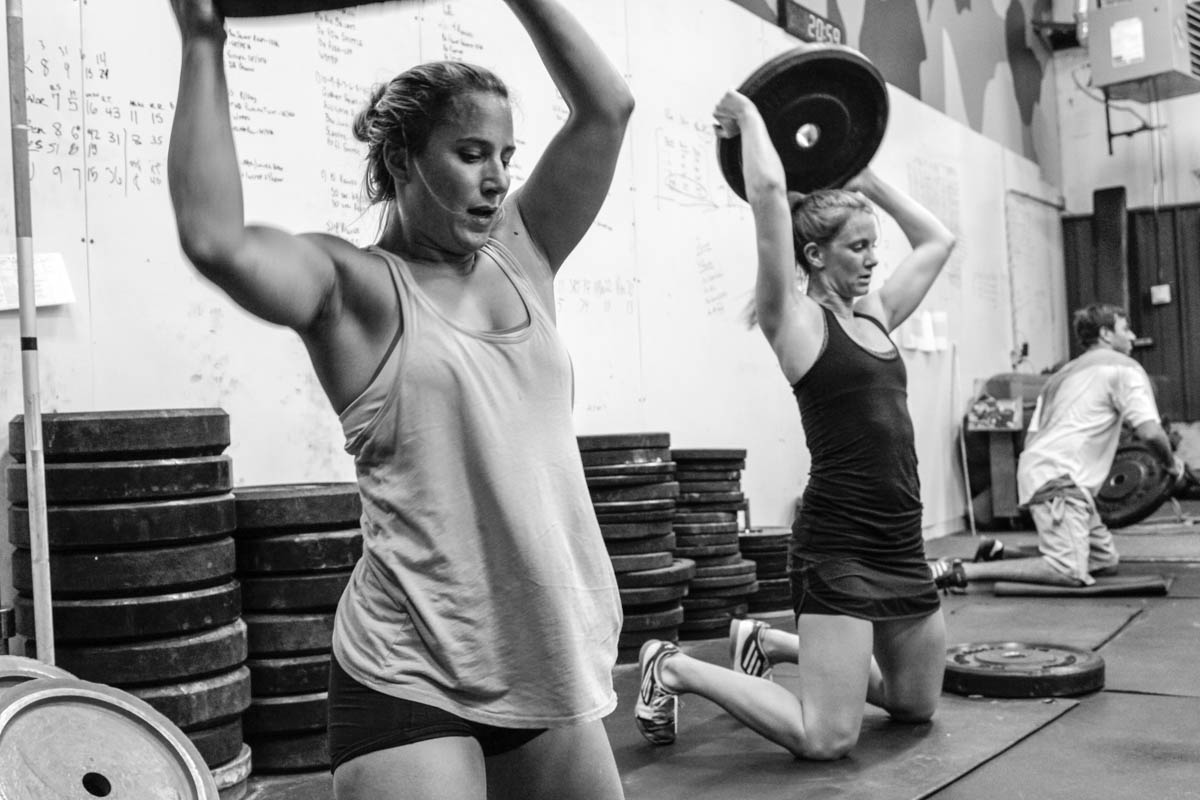By Rob Shaul
Both mountain and military athletes commonly report the two areas of our programming which transfer best to the field are: (1) core strength and; (2) mental fitness.
Recently, I’ve had cause to rethink the way we train core strength, and, more broadly, overall strength.
Where We’ve Been
Until 2015, my general strength training theory has been body-part driven and barbell-focused.
My classic, TLU programming methodology, for example, includes three strength circuits separated by area of emphasis: A total body exercise, lower body exercise and upper body exercise.
A typical TLU Session looks like this:
- (1) 8 Rounds (Total Body Circuit)
3x Power Clean – increase load each round until 3x is hard, but doable
Hip Flexor Stretch - (2) 6 Rounds (Lower Body Circuit)
5x Back Squat – increase load each round until 5x is hard, but doable, then immediately …
2x Jumping Lunge – be explosive!
Lat + Pec Stretch - (3) 6 Rounds (Upper Body Circuit)
8x Bench Press – increase load each round until 8x is hard, but doable
Rope Climb
Pigeon Stretch
My core-strength theory has focused not on body area, but movements. A typical core strength circuit has included one each of flexion, extension, rotation and isometric exercise.
A typical core circuit looks like this:
- 4 Rounds
10x GHD Sit-Up Flexion
60 Second Front Bridge Isometric
10x EO’s Rotation
10x Face Down Back Extension Extension
Why the Change?
This new thinking is driven by pushing my attention further from the gym and closer to the actual strength demands of the mountain and battlefield/fire grounds.
A few things stand out when I look at the real thing.
- There are few, if any, flexion movements
- Core demands are dominated by isometric bracing against torque, moving rotationally, and lifting using extension – often heavy, awkward, hard to grip objects. As well, this lifting is done standing or kneeling.
- Core strength endurance is as important as absolute core strength.
- There isn’t a whole lot of full squatting, but there is frequent lunging and step up movement.
- There is much more pulling than pressing, and this pulling is ground based – standing or kneeling, which also challenges the mid section.
- Little is done laying on the ground. Strength/core/lifting work is done standing, or kneeling.
- Grip strength is very important.
Back in the gym, one thing I’ve noticed before, really stand out now:
When squatting, hinging, lunging, and overhead pressing, the core is usually the weak link. Squatting and lunging especially, the core always fails before the legs.
“Chassis Integrity”
When we describe our programming for mountain and tactical athletes, we note our focus is on the “Mountain/Combat Chassis” – legs, lungs and core.
“Chassis Integrity” is when the legs, core and upper body, work together as one, without weak linkage. I suspect that our focus on the Mountain and Combat Chassis has been correct, but the way we’ve been training it can be improved. This evolution has led to this new “Chassis Integrity” theory and methodology.
We’re just at the infancy of this new theory. Here are some of my ideas and thoughts going in:
- Strength work should be limited to total body exercises, which include both the upper and lower body and require taking something heavy from the ground and putting it overhead. This work should be done standing or kneeling.
- Awkward training implements including sandbags, heavy bags, slosh bags, kettlebells, etc. need to have a greater role in our programming as these cause greater strength and proprioception demands on the mid section and demand Chassis Integrity.
- Core circuits should include three movements – anti-rotation, rotation and extension.
- Core exercises should be done either standing, or kneeling. Never laying on the grounds as this doesn’t train or challenge Chassis Integrity
- Core circuits must train not only strength, but strength endurance. Rather than reps, use time.
Here is an example of a Chassis Integrity training session:
Warm Up:
- 10 Minute Kettlebell Complex
Training:
- (1) 8 Rounds
3x Sandbag Curtis P – increase load each round until 3x is hard, but doable
Standing Rope Pull @ 80# Sandbag
Hip Flexor Stretch - (2) 20 Minute Grind (work briskly, not frantically)
5x Heavy Tire Flip (Extension lifting)
Slosh Bag Pick up and Carry – set down and pick up to each shoulder and walk 5 meters. Two times each shoulder, 4x
total (Extension lifting, anti-rotation)
5x Kneeling Keg Lift at 15/20kg Kettlebell (rotation)
See below for a clip of our FreeSkiers working through the Chassis Integrity Session here:
Obj: Chassis Integrity
Warm Up:
- 2 Rounds with PVC …
5x Shoulder Dislocate
5x Overhead Squat
5x Hang Power Snatch
5x Hang Power Snatch + Overhead Squat
5x Hang Squat Snatch
Instep Stretch
Then …. - 2 Rounds with 15# Barbell
5x Overhead Squat
5x Hang Power Snatch
5x Hang Power Snatch + Overhead Squat
5x Hang Squat Snatch
Instep Stretch
Training:
- (1) 8 Rounds
3x “The Exercise” – increase load each round until 8x is hard, but doable
Rope Climb or 3x Tarzan Pull Ups
Hip Flexor Stretch - (2) 20 Minute Grind ….
60-Foot Wheelbarrow or Sled Push (if you don’t have a wheelbarrow)
Pick up and Carry with Slosh Ball (40/60#) or Sandbag (40/60)
10x Kneeling Band Twist each side
Questions, Comments, Feedback? Email coach@mtntactical.com or comment below

